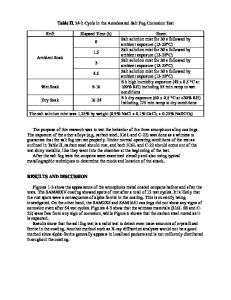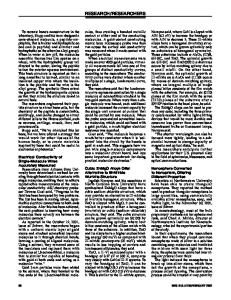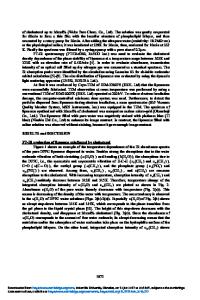Wurtzite materials in alloys of rock salt compounds
- PDF / 755,037 Bytes
- 9 Pages / 584.957 x 782.986 pts Page_size
- 92 Downloads / 886 Views
ANNUAL ISSUE
EARLY CAREER SCHOLARS IN MATERIALS SCIENCE
Wurtzite materials in alloys of rock salt compounds Yanbing Han1, Samantha L. Millican2, Jun Liu3, Sage R. Bauers3, Sebastian Siol3,b), Stephan Lany3, Mowafak Al-Jassim3, Charles B. Musgrave2, Aaron M. Holder4, Andriy Zakutayev3,a) 1
Materials Science Center, National Renewable Energy Laboratory, Golden, Colorado 80401, USA; and School of Physics and Microelectronics, Zhengzhou University, Zhengzhou 450052, China 2 Department of Chemical and Biological Engineering, University of Colorado, Boulder, Colorado 80309, USA 3 Materials Science Center, National Renewable Energy Laboratory, Golden, Colorado 80401, USA 4 Department of Chemical and Biological Engineering, University of Colorado, Boulder, Colorado 80309, USA; and Materials Science Center, National Renewable Energy Laboratory, Golden, Colorado 80401, USA a) Address all correspondence to this author. e-mail: [email protected] b) Current address: Empa—Swiss Federal Laboratories for Materials Science and Technology, 8600 Dübendorf, Switzerland. This paper has been selected as an Invited Feature Paper. Received: 15 October 2019; accepted: 13 December 2019
Materials with crystal structures containing tetrahedral motifs are preferable for optoelectronic applications because they often have direct band gaps and low electron effective masses. However, crystal structures of manganese chalcogenides typically contain octahedral motifs, such as in rock salt (RS) MnS and MnSe materials. Here, we experimentally show that MnS1−xSex alloys with tetrahedrally bonded wurtzite (WZ) structure can form between MnSe and MnS parent compounds with octahedral RS structures, at S-rich compositions (x < 0.4) and low synthesis temperatures (∼300 °C). The calculated mixing enthalpies of MnS1−xSex alloys in RS and WZ structures cannot explain this experimental observation, so we hypothesize that WZ stabilization may be related to smaller structure density and lower surface energy compared with RS. The resulting WZ MnS1−xSex alloys have 3.0–3.2 eV optical absorption onset and lower electrical conductivity (
Data Loading...









